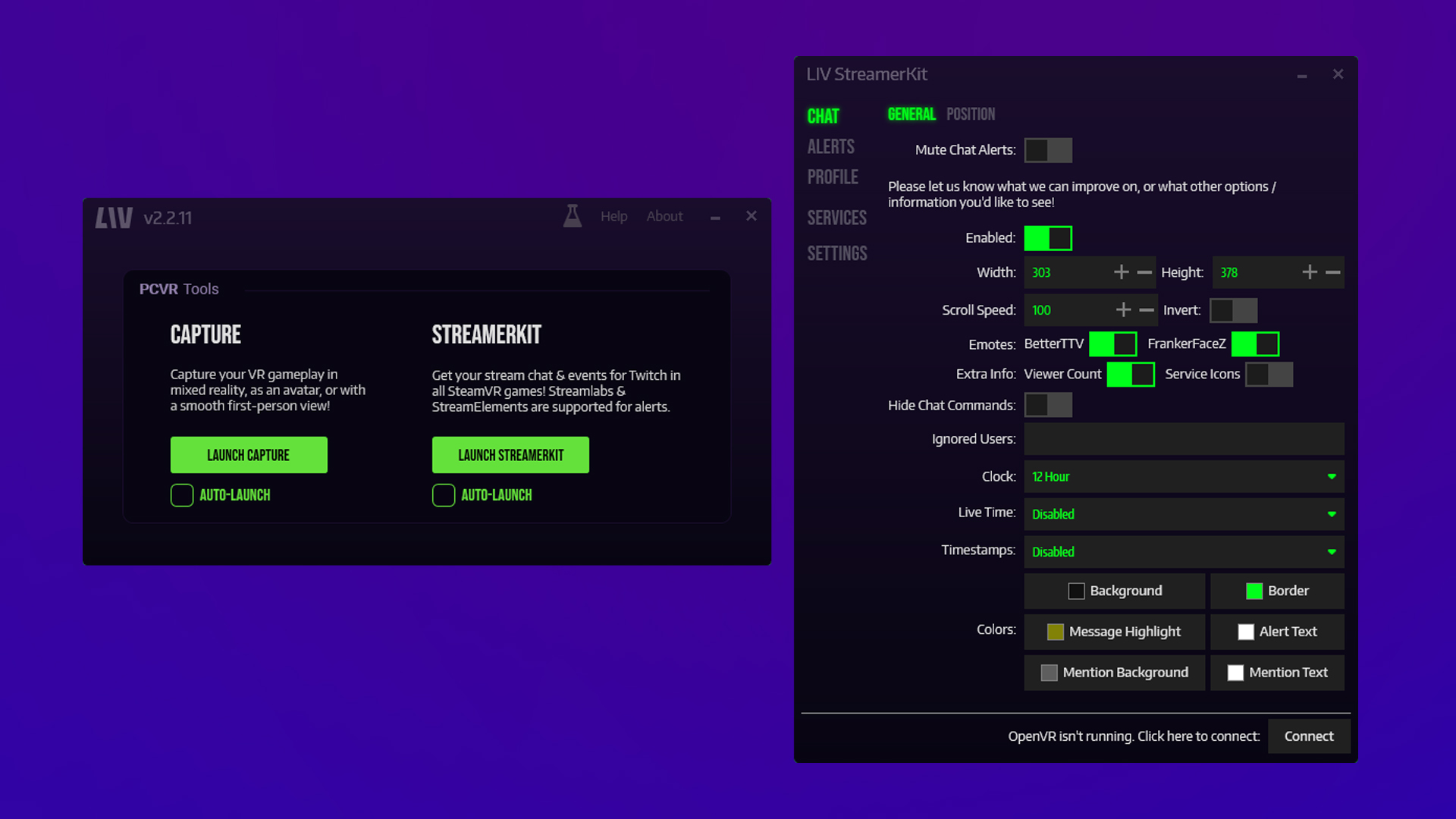Eye of the Temple has been in development for as long as I’ve been playing VR, and it shows! Solo game developer Rune Skovbo Johansen has given this passion project an insane amount of polish over the past 5 years. Every little detail, from the game’s unique lighting system to how the water splashes when you whip it, makes this Indiana Jones-inspired VR puzzle game look gorgeous in mixed reality.
There’s so much aspiring game developers can learn from Eye of the Temple’s highly custom LIV integration. For content creators, Eye of the Temple is going to be one of the coolest looking mixed reality games you can bring to YouTube or Twitch. Let’s dive in!
How is Eye of the Temple different?
These days it’s rare to see a VR game released with a completely new mechanic, but when these groundbreaking games do come out they inspire generations of future VR games. Just take a look at when the flow of rhythm gaming was perfected with Beat Saber, or when Survios released their patented, fast moving Fluid Locomotion system in Sprint Vector.

Eye of the Temple is another one of those illusive games based on a unique concept, although this game is more easily defined by its lack of a major VR mechanic that almost every other game has. That missing mechanic is artificial locomotion; Eye of the Temple lacks the need to press any buttons in VR at all.
"While some of the custom LIV integration work I did took quite some research and development time, the basic out-of-the-box integration of LIV is very simple and can be done in a few hours or less.” - Rune
The coolest part is this vast exploration VR game takes place entirely in your own 2 meter by 2 meter playspace! The game design cleverly fools you into walking back and forth within your own gaming room while taking you up elevators and across traps as you move from puzzle to puzzle.
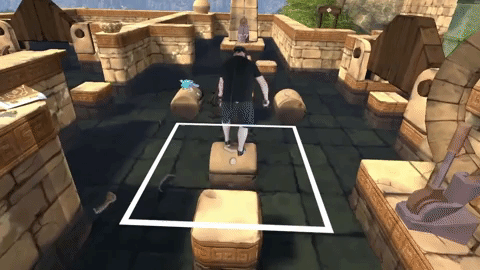
With no artificial locomotion and being entirely contained within your own playspace, that makes Eye of the Temple absolutely perfect for mixed reality. You won’t look like you’re skating around or teleporting from spot to spot, the natural movement with your own legs can immerse your viewers as they watch you (or your favorite avatar) in third person.
Rune’s highly custom mixed reality integration makes the game look even cooler. Here are a few things he did to make Eye of the Temple graphically gorgeous in MR:
Custom lighting effects
One of the features added the earliest in development was Eye of the Temple’s torch. It plays a key role in solving puzzles as well as literally lighting your path forward. In mixed reality, the torch also lights your real body!
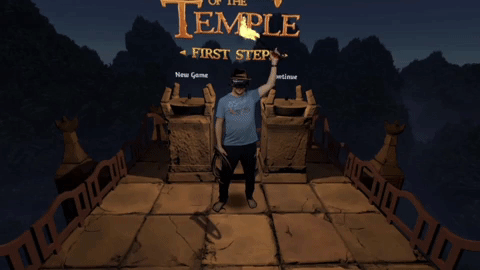
Rune’s unique solution to mixed reality lighting involves manipulating LIV’s foreground layer. For those of you new to mixed reality, the MR shot is composed with three basic parts, the foreground, background, and the player. When you’re in the shadows, Eye of the Temple puts a slightly opaque set of black pixels on your foreground, and using the mask (or cutout) of the player, you look like you’re in the dark! When you’re in the light, those black pixels become completely transparent, making you seem brighter.
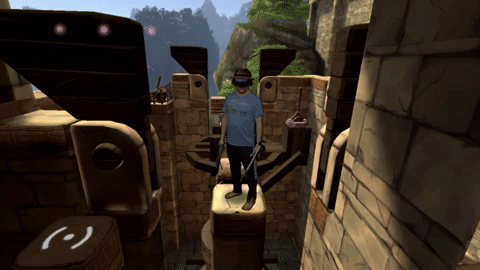
Other game developers could take note from this creative solution to player lighting too. If you wanted to show if a player got hurt in a shooter, for example, you could use the same technique to show them flash red.
Foot Clipping Fix
Some creators have noticed the bottom of their feet or legs get cut off in their mixed reality recordings. This is because the headset estimates where your body is, and if your feet are in front of you (as they tend to be when you walk), they’ll likely leak into the foreground and get cut off.
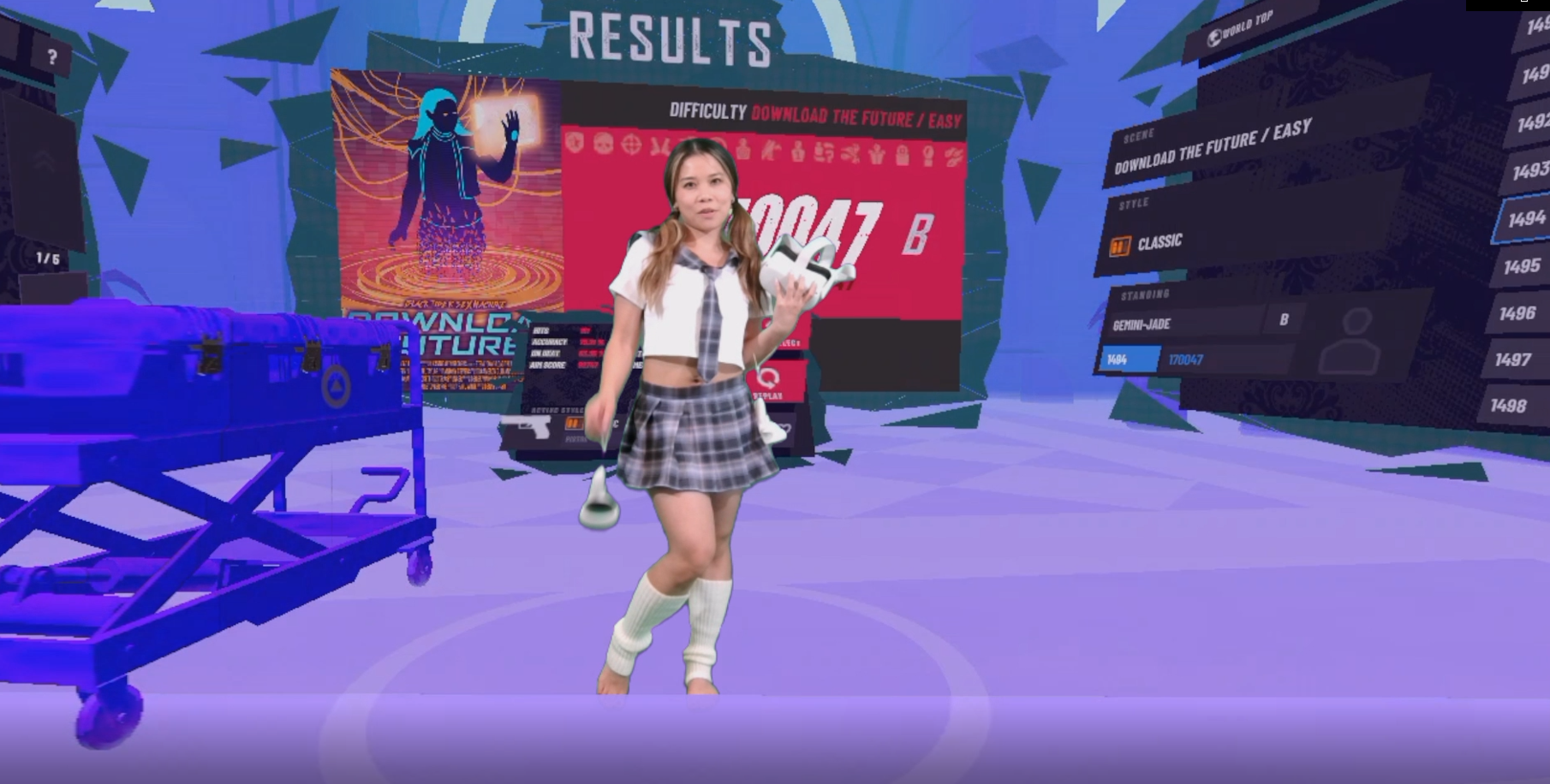
This is especially an issue in Eye of the Temple, a game where you move exclusively by walking.

Rune came up with a creative fix so this never happens in Eye of the Temple. Because the ground can never be directly in front of the player and thus in the foreground, Rune added a new clipping plane above the ground where your feet would be.
The result is that the ground and anything below it is never included in the foreground layer, no matter how close it is to the camera. Now, you can step from platform to platform without getting your foot cut off.
For you visual learners, this is what the custom foot clipping plane looks like in practice:

Avatars
Avatar users, don’t feel left out! Rune has given plenty of love to a custom avatar camera for Eye of the Temple.
When using avatar cameras in games that feature a lot of indoor and tight spaces, like Phasmophobia for example, you might notice that the camera will often clip through walls.
Rune’s custom avatar camera controls lets the game control the camera for you. It does its best to keep the camera out of the walls and frame the shot nicely. The camera movement even tries to stay smooth and will sometimes use cuts instead of excessive motion.
This can add a cinematic-like effect to your gameplay, with no extra work required! Check it out with your favorite LIV avatar. If you don't have a custom LIV avatar, we can make you one for free here!
Developing with LIV
Rune has been one of the most enthusiastic LIV developers we’ve worked with. We often tell people that LIV integration is simple and can boost the number of eyes on your game, as well as viewer retention of your trailers on the Steam or Oculus store.

I asked Rune what he thought of using LIV to help show off Eye of the Temple over the past few years, and here’s what he had to say:
“While some of the custom LIV integration work I did took quite some research and development time, the basic out-of-the-box integration of LIV is very simple and can be done in a few hours or less. When a VR game supports LIV, that's an easy way for streamers and creators to be able to express themselves in a more visible way in the game, whether in the form of their own bodies via mixed reality, or via avatars. If furthermore it's a VR game where the players use their hands, legs or whole bodies to interact, then that's shown off extra well with LIV in a way that first person footage can't always do.” - Rune Skovbo Johansen
There’s so much more to the Temple
If you’ve played the demo of Eye of the Temple, First Steps, you should know there’s about 8x as much content waiting for you in the full campaign. With a solid 4 hour playtime, you can spend even more time in the Temple finding secret treasures or getting a high score in the replayable speedrunning mode. Eye of the Temple is shaping up to be 2021’s biggest indie VR title.
If you’re excited to play, be sure to wishlist Eye of the Temple on Steam!
We’re always looking for more game developers and content creators to connect with. Be sure to join our Discord to connect with our community, or follow @LIV on Twitter, we’d love to see your game or watch your content!










